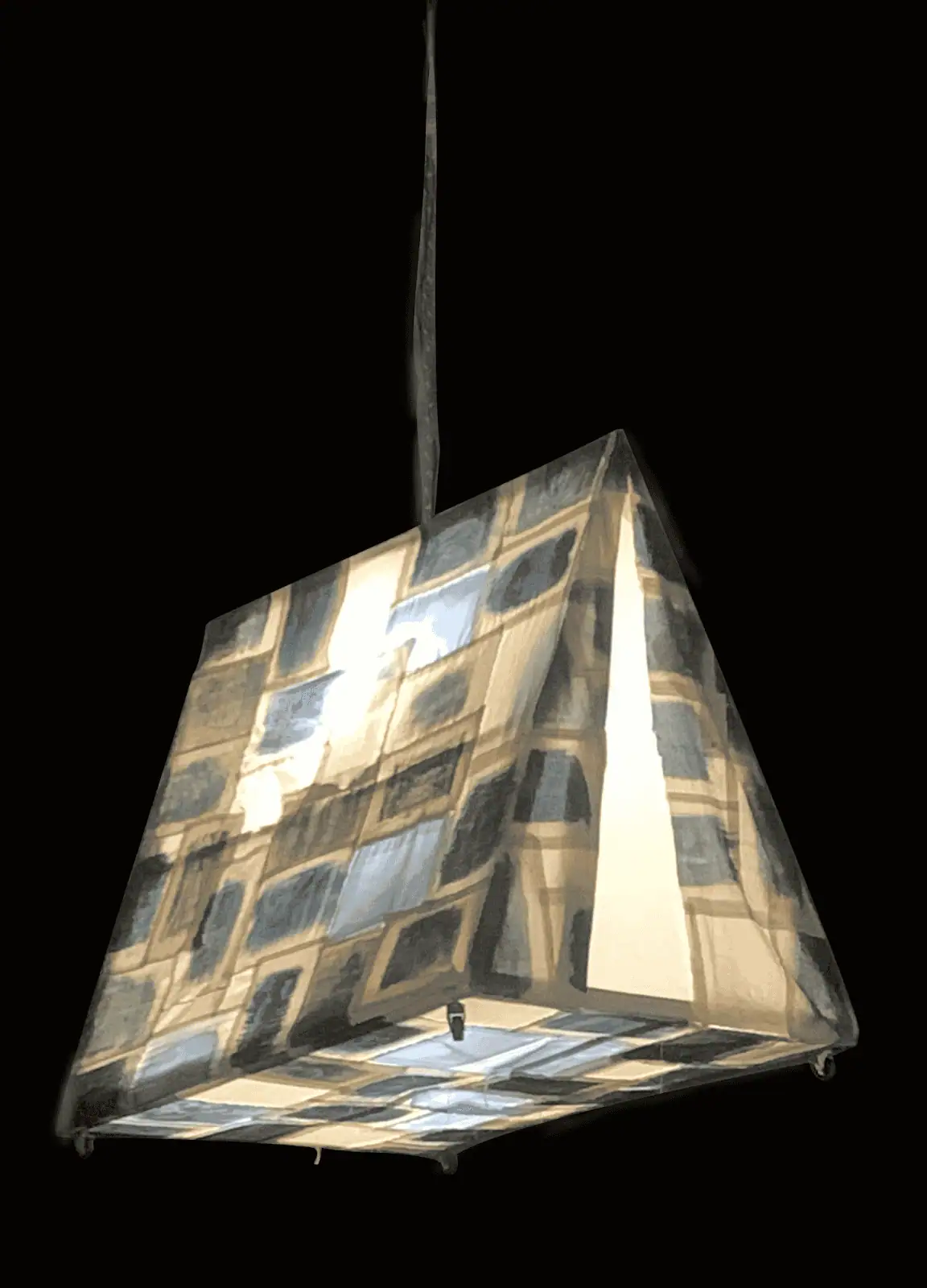
Medium: Cyanotype solutions, linen, Mansouri fabric, and wood. Dimensions: 115 X 100 X 80 cm
As part of his participation in Marsam 301’s art workshop: “The Road is not Bumpy”, the artist Ahmed Hmeedat orchestrated an art installation in collaboration with a group of youth from Aida Refugee Camp in Bethlehem. The purpose of the workshop was to trigger artists to think, interact with the camp space, and engage with its people as much as possible. This community-created art installation highlights significant aspects of life in the camp. Hmeedat, in collaboration with youth from the camp, printed meaningful and symbolic photos of objects and scenes relevant to the Palestinian refugee experience. The resulting collective work is a multimedia sculptural installation made with linen, Mansouri fabric, and paper, that recreates historical family imagery from the Aida Refugee Camp.
The choice of cyanotype printing technique was especially relevant to the topic of the workshop. The Road is not Bumpy workshop aimed to generate community artwork through an investigation of life in the camp. Cyanotype produces cyan blue prints which resonate with the color of the UNRWA logo, an organization that is well known for providing humanitarian aid and services to Palestinian refugees. Blue is also a signifier of memory and the nostalgia of the past events. It is usually a color of agony and sadness.
However, Ahmed and the camp youth sought in this project to reflect on different emotional events of everyday life in the camp: old men selling food in small grocery stores, kids playing in the streets, and old house doors with different patterns on them are just some examples of the prints created during the workshop.
Through the execution of this work, Ahmed also engaged families and youth in the camp by inviting young men and women to share family photos and belongings, which were then used to create cyanotype-printed mosaic fabric panels. These panels were stitched together to form a refugee tent, and present fabric mosaic rich in symbolism and meaning, surrounded by blue-toned cyanotype images that display a collective visual memory.
Many asked Ahmed, why did you choose to stretch the printed images onto the frame of a miniature tent? The tent has been used a lot in the Palestinian art, yet it has never been utilized to reflect a visual memory of the camp. Cyanotype is significant here because it relies on the sun rays to bring the photos to life. This art installation has a powerful statement that the refugees’ memories, plight, and history in the camp is being witnessed by nature itself. “The sun intervenes to narrate the story. It is needed to interact with the chemical solution and turn it into blues. The tent also has a lamp installed inside it in order to generate an aesthetic expression and sacred halo while it is rotating in the air. Ahmed states, “If international law mechanisms and communities do not accept our narrative, then the sun with its rays will bring these testimonies live.” This art installation tells us more about the ongoing Nakba “catastrophe” in Palestine.
The tent has wheels installed. Ahmed elaborates on that and reflects that they are there to symbolize the internal displacement of refugees that occurred in the West Bank and Gaza after October 7, 2023. The refugees in the camp have been internally displaced again. This status is a kafkasque status. They are stuck in their ongoing displacements. And this was manifested in Gaza camps such as Nuseirat Camp, Jenin Camp as well as in the West Bank and beyond.
This installation is a product of an experimental workshop that Ahmed aims to develop further and continue.
As a self-taught artist, I strive to capture the ongoing reality of the Nakba for Palestinians and bring attention to the plight of refugees through my art. I had the privilege of contributing to the establishment of the Museum of the Palestinian People in Washington D.C., and my work has been featured in Symposeum Magazine. As an educator at Al-Quds Bard College in East Jerusalem, I teach in the Human Rights and International Law Program. My commitment to social justice and inspiring the next generation fuels my pursuits.